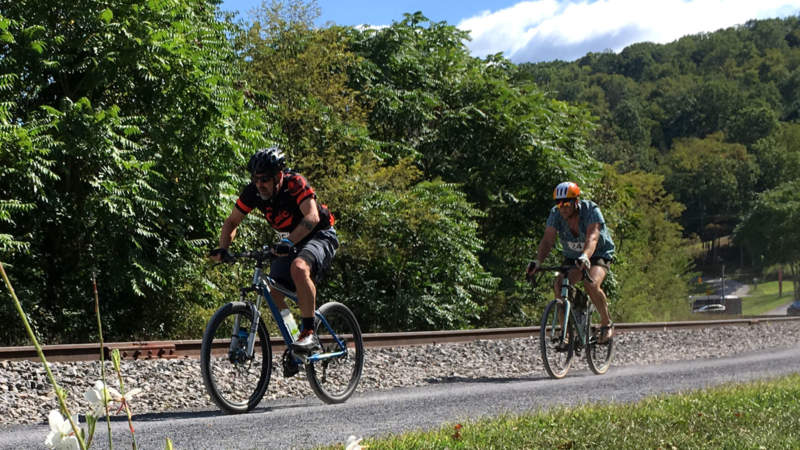It was in 1978 that the Western Pennsylvania Conservancy handed the deed for 26.75 miles of the Western Maryland Railway’s abandoned corridor to the Pennsylvania Bureau of State Parks, and the first section of what would become the Great Allegheny Passage was laid down between Ohiopyle and Confluence. Over the next 35 years, volunteers in nearby small towns — West Newton, Connellsville, Rockwood, and Meyersdale, in Pennsylvania’s Laurel Highlands, and both Frostburg and Cumberland in Maryland’s mountains, among others — began constructing similar segments of trail for neighbors to enjoy. Trail-building also began in Downtown Pittsburgh, along Pittsburgh’s South Side, around McKeesport, and in Homestead.
The Great Allegheny Passage Conservancy, then known as the Allegheny Trail Alliance, took a coordinating and fundraising role to renovate and convert iconic former railroad structures and to complete missing links in what would become the Great Allegheny Passage, a whole greater than the sum of its parts. Completed in 2013, thanks to many volunteers and the work of advocates like Linda McKenna Boxx, the Great Allegheny Passage is a world-class path for all kinds of adventures, winding through some of the most spectacular, challenging topography in the eastern United States. For a detailed look at the building of the Great Allegheny Passage, visit a new dedicated website celebrating the champions who made it happen.
Today, the GAP carries a lengthy portion of the Potomac Heritage National Scenic Trail, hosts a segment of the September 11 National Memorial Trail, and is a founding member of the Great American Rail Trail preferred route.

